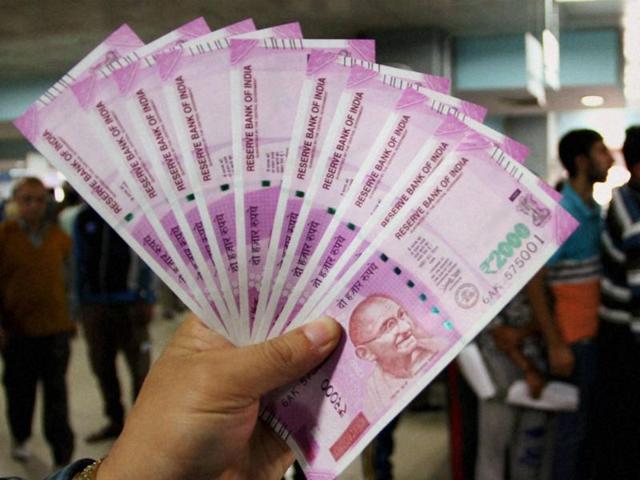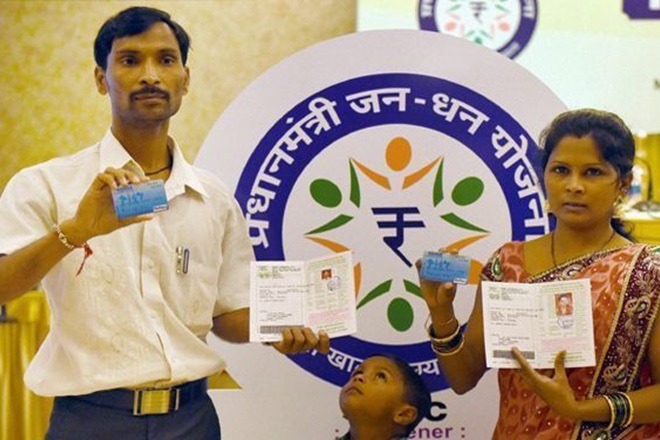One of the most challenging phases in the history of Indian banking sector, demonetisation has completed one year. But despite all the hardships associated with its implementation, it has helped in bringing several positive changes in the banking domain, opine experts associated with the Banking Financial Services and Insurance (BFSI) industry.
On November 8 last y ear, the Narendra Modi- led government demonetised Rs 500 and Rs 1,000 notes as part of its drive to curb the menace of black money, counterfeit notes and corruption.
ear, the Narendra Modi- led government demonetised Rs 500 and Rs 1,000 notes as part of its drive to curb the menace of black money, counterfeit notes and corruption.
Demonetisation has acted as a catalyst towards initiating a paradigm shift in the Indian banking sector.
“It is quite satisfying to see that majority of the stakeholders in the domain are seriously working towards digital upgradation. The note ban of high denomination currency indeed initiated the change. But the base of the digital revolution in the banking segment was already functional in the background,” said Dhiraj Nayyar, Officer on Special Duty and Head, Economics, Finance and Commerce, NITI Aayog.
Talking about the challenges associated with the drive and the final positive outcome of it, N. Rajendran Chief Technology Officer, National Payments Corporation of India (NPCI) said, “Banking sector has undergone a paradigm shift post demonetisation. Public and private sector banks are working hard to get into the digital transaction mode and it is turning out to be very challenging for the entire domain. To contribute to the Central Government’s digital drive, there is a need to initiate robust authentic mechanism. This is also going to bring positive changes in the industry.”
The drive also led to the exponential rise in digital payments, mobile banking and availability of non-conventional banking techniques. For ensuring a better implementation of the directive measures, the Central Government issued several guidelines during this phase.
Lots of initiatives have been undertaken by the government and the stakeholders in making the Digital India dream a reality.
“We all are witnessing the change in the ecosystem. In addition to this, digital payments have registered tenfold increase post-demonetisation,” said Sumnesh Joshi, Assistant Director-General, Unique Identification Authority of India (UIDAI).
On the one hand, the demonetisation has been a solid step towards curbing the corrupt practices in the banking industry by putting a check on the cash transactions. On the other hand, the digital payments modes are registering a massive growth following the demonetisation drive.
A section of the industry feels the Narendra Modi’s drive has been a successful attempt pushing the corrupt to bring their dark secrets out in terms of wealth.
“Denometisation forced everyone to take out their hidden money. The government tried to control it by setting up a withdrawal limit. As a result of this, people started using mobile for making payments. Many telecom players emerged during this period. In sync with this, the government launched BHIM and UPI. A new way of payments has come out post-demonetisation,” said Lalit Popli, Head – IT, ICICI Prudential Asset Management.
According to a Reserve Bank of India (RBI) report, the usage of credit and debit cards recorded a significant surge during 2016-17. The number of credit card transactions inflated to 1.08 billion from 0.78 billion valued at Rs 3.28 lakh crore from Rs 2.40 lakh crore.
Similarly, the number of debit card transactions rose to 2.39 billion valued at Rs 3.29 lakh crore during 2016-17.
“In the form of demonetisation, Prime Minister Narendra Modi initiated one of the most important things required for the Indian banking sector. This drive has pushed banks to gear up their digitisation efforts. The rise in digitisation means higher investments in Information Technology,” Rohit Rai, Director Strategy, Unotech Software Pvt Ltd.
The RBI report further suggested that the use of prepaid instruments (PPIs) grew exponentially during the year. The number of PPI transactions grew to 1.96 billion in 2016-17 from 0.74 billion transactions in 2015-16. The value of transactions rose to Rs 0.83 lakh crore (Rs 0.48 lakh crore) during the year.
On the other hand, the number of transactions under Real Time Gross Settlement (RTGS) category inflated to 108 million transactions during 2016-17 as against 98 million transactions in 2015-16.
National Electronic Funds Transfer (NEFT) transactions inflated to 1.6 billion during 2016-17, against 1.3 billion transactions reported in the previous fiscal.
Talking about the impression created by demonetisation, Rajnish Khare, Head Digital Transformation, Social Media; New Business and Mobility Banking at HDFC Bank, said, “Even after a year, news on newer effects of demonitisation and government actions continue to surface. Post-Demonetisation, on one hand, for most banks, cost of funds reduced drastically, it also helped bank’s cause to drive digital transactions.”
“Surge in bank balances helped cross-sell and up-sell initiatives helping both the customer and the bank. On the other hand, appetite for loans remained the same or stagnated even due to the feeling of uncertainty. Thus, Government’s demonetisation move towards arresting black money circulation has led to both positives and negatives for the banking sector,” he said.
Elets The Banking and Finance Post Magazine has carved out a niche for itself in the crowded market with exclusive & unique content. Get in-depth insights on trend-setting innovations & transformation in the BFSI sector. Best offers for Print + Digital issues! Subscribe here➔ www.eletsonline.com/subscription/




















